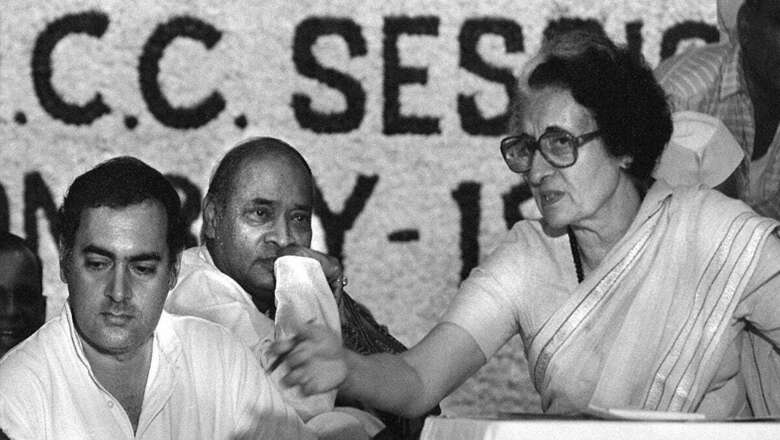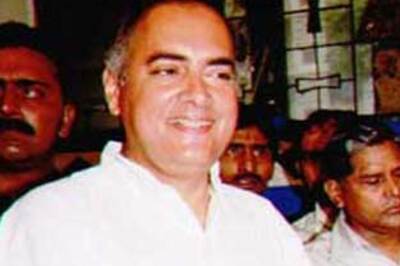
views
How many Indians were murdered by the government during the Emergency? If you have never heard this question before, you should wonder why. The answer is two thousand men. They were kidnapped randomly, from trains, from the fields, anywhere. Sometimes, government officials would burst into their homes at night and take them away for sterilisation. Many of them died in botched operations—two thousand, at least.
For most Indians, the Emergency is just a story. The story is told without context. We know that Opposition leaders were put in jail and that the freedom of the press was muzzled. But no more. This makes it easy for people to brush it off as a one-time thing. Even the Congress takes that line today. Yes, we made a mistake fifty years ago, but so what? Forget it and move on.
They can do this because we do not know the ideological roots of the Emergency, such as the Nazi race science theories, the failure of hard-left socialism, and the politics of foreign aid. We do not talk about the role of sinister foreign donors such as the Ford Foundation or the Rockefeller Foundation. We do not know the events that led up to the Emergency, including the involvement of people who were in government even a few years ago. Such as Dr Manmohan Singh, for instance. Worse, it allows them to make superficial comparisons with anything that happens today.
The Congress party and its network have effectively turned the issue on its head and claim this or that happening today is an “undeclared Emergency.”
So let’s tell the full story. First, the economic context.
Indira Gandhi became the Prime Minister in 1966. This was almost 20 years after independence. The socialist model was failing. There were shortages of everything; rice, wheat and milk. Already in 1959, police in Bengal had mowed down protesters asking for rice. Now there was a near famine in Bihar and eastern Uttar Pradesh. In Bengal, they had to ban the sale of rosogolla, to save milk. These economic realities began to bite the Congress. In the 1967 general elections, they only just managed a majority.
To save the Congress party, Indira Gandhi now turned to even more ideological, hard-left socialism. Of course, that is never a solution. So it quickly became a matter of looking for someone to blame. First, it was the fault of the private banks. So Indira Gandhi’s government nationalised the banks in 1969. Then, it was the fault of rich people, as it always is. So they raised the top income tax rate to over 97 per cent. Then, it was the turn of middle-class people. They were forced to deposit a portion of their income with the government under the “compulsory deposit scheme.” Then foreign companies were to blame, who were chased out of India in 1973. Finally, it was the fault of grain traders, accused of raising prices artificially. So the government took over the wheat distribution in 1974. It did not work. Wheat prices soared even further.
The country was descending into chaos. The Indian Army had won a spectacular victory over Pakistan in 1971. But just four short years later, the average Pakistani was again richer than the average Indian. That is how bad India’s economic policies were in that period. By 1974, India’s GDP growth had slowed to just 1 per cent. Inflation rose to an astonishing 29 per cent. Naturally, there were protests everywhere. This is the real reason for the Emergency of 1975.
And who was the Chief Economic Advisor to the Indian government during these years of ruin? That would be Dr Manmohan Singh.
Now let us come to the ideological context. Beginning in the early 1900s, panic began to spread that Indians and Africans breeding in large numbers would take over the Earth, leaving nothing for the “superior” white race. So they would have to be sterilised, along with anyone else considered unfit to reproduce. The key figure here is Margaret Sanger, now a hero of the American Left. She toured the United States extensively in the 1920s and 1930s, raising support for the government to improve the “quality” of the population. She spoke at rallies of the Ku Klux Klan, the most infamous white supremacist organisation in the world. The result was a spate of laws that allowed for forced sterilisation of anyone in the interest of the state.
This went on for longer than you might think. As late as 1964, some US states would forcibly sterilise any black person who failed an IQ test. There is a reason this story is told so rarely. Because it brings up the embarrassing detail that the race science theories of the Nazis began not in Germany, but spread from the United States. Indeed, when Nazi doctors were put on trial in the late 1940s for carrying out brutal experiments on humans, they cited American medical literature in their defence.
In the 1930s, Margaret Sanger had praised the Nazis for their forced sterilisation program, intended to safeguard the “master race.” The Nazis banned sexual contact between Jews and Germans, sterilised gypsies and Romani people, and also the Afro-Germans. In the 1920s, there had been a moral outcry by the Church against the Afro-Germans, born to French colonial troops from Africa who had been posted to the Rhineland after the First World War. Incidentally, the man who led these protests was a senior Italian priest by the name of Eugenio Pacelli. As a representative of the Vatican, Pacelli would go on to sign an agreement with Hitler in 1933 and would rise to become Pope in 1939. When Allied troops arrived in 1943-44 to liberate Italy from fascism (British Indian and African soldiers among them), the Pope made a desperate appeal not to let coloured soldiers enter Rome.
After the Second World War, race science theories got a bad name in the West, due to the association with Nazis. But the fear about the spread of “inferior races” did not go away. Instead, the focus shifted to India and China. But Communist China was closed off to the West. This left India as the main target.
Margaret Sanger travelled to India in 1959, where she appeared arm-in-arm with Nehru. Lady Dhanvanthi Rama Rau, a former president of the All India Women’s Conference, describes the incident thus: “On hearing my news, he ran up the steps like a schoolboy, put his arms around Margaret in greeting, and gently led her into the hall where the great gathering was waiting for him. It was a most touching and unforgettable scene: the Prime Minister ignoring all formality, Mrs. Sanger glowing with pride, and the huge audience standing up, cheering and applauding.”
Thus began the politics of foreign aid. As India’s economy collapsed in the 1960s and even worse in the 1970s under the weight of hard socialism, it would need more and more aid. American aid to India came through American channels such as the Ford Foundation or the Rockefeller Foundation. These foundations and their people became deeply embedded in the government. How much aid did India get at the time? At least $10 billion from the US alone. This made India the single largest recipient of aid from the United States. For comparison, US aid to Europe after World War II, known as the Marshall Plan, was around $13 billion. The whole of Europe rebuilt itself with that much money. But India descended further into poverty and needed even more aid. Countries such as Japan and Germany had been bombed to dust in 1945. Just fifteen years later, both countries were giving aid to India. This is what happens when you have hard socialism.
And if you want aid from others, you have to take orders from them. This is exactly what happened during the Emergency. Of course, India needs responsible family planning. But not under the influence of Nazi race science theories that see us as inferior people. And definitely not due to blackmail from the West, as a condition for foreign aid.
The Emergency was not a one-time mistake. It was the culmination of everything that had gone wrong with Nehruvian socialism. And yes, it can happen again, given the same conditions. The American foundations and their loyalists in “civil society” are still around. They always cry the loudest whenever someone touches their foreign funding. The worst of the socialist ideas, such as wealth redistribution, are even making a comeback. As for racist prejudices, they will probably always be around, unfortunately. We would do well to watch out for our democracy.
Abhishek Banerjee (@AbhishBanerj on “X”) is an author and columnist; Karuna Gopal (@KarunaGopal1 on “X”) is President, Foundation for Futuristic Cities. Views expressed in the above piece are personal and solely those of the author. They do not necessarily reflect News18’s views.


















Comments
0 comment